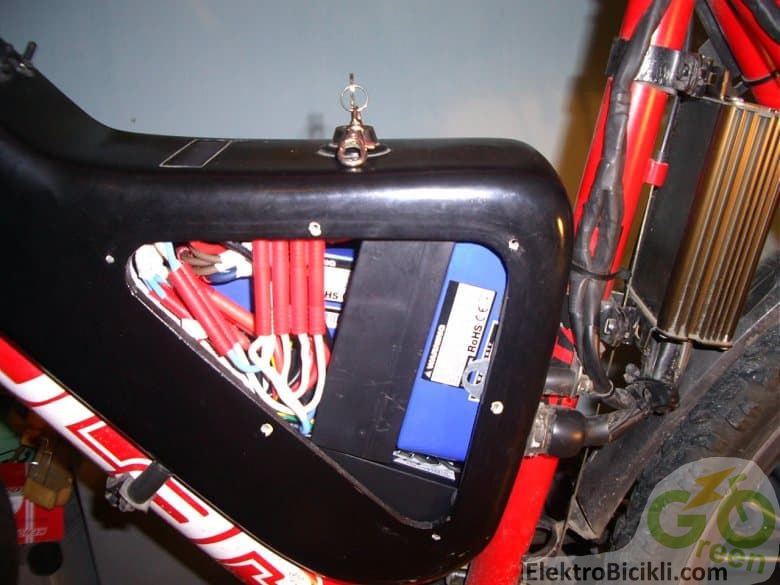Guest post by Dalibor
In the market there are various types of batteries – some better, some less known (popular).
1. Lead batteries
The first combination I used on my bicycle consisted of lead batteries, that had a total weigth of 12 kg, with one weighing approximately 3 kg. Besides this big weight, these batteries had half the capacity of the stated one. Also, they performed very poorly in low temperatures.

I had used four such batteries combined for a very shot period. After having done some research, I had realised that this is not an acceptable combination for an electric bike that I want.
2. LiPo batteries
Soon after I opted for a LiPo battery combination. Performance of these batteries has delighted me. After some testing I realised that this is a perfect solution for my needs. Batteries shown in the picture below are currently on a bicycle I ride. The weight of the entire set is around 5 kg, with three times the capacity of the previous lead battery setup.

These batteries can take large temperature variations, as well as large charging and load currents. All these characteristics help better e-bike performance. All the contacts are made using connectors that can take large currents. Connectors also allow easy detachment for regular balancing of the cells and worn battery replacement. LiPo batteries are very flammable, so regular maintenance is important.

3. LiFePo4 batteries
As the last, the best and the most expensive variant I usedLiFePo4 batteries. These batteries are of exceptional quality. Long lifetime, cell stability and high price are the characteristics of these batteries. By combining several separate cells, one can make a combination of the desired capacity and performance.

Picture below shows an example of LiFePo4 cells connected to form a shape that fits the box (battery housing) they will be mounted in. Electronics is added to this assembly in order to balance the cells. This balancing enables the batteries to last long and function properly.


